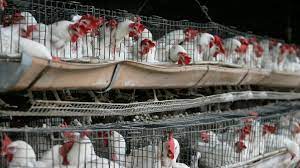Bird flu Self-Declaration a Significant Stride in Poultry Industry
What does India’s bird flu-free zone mean to the poultry sector?
The World Organisation for Animal Health (WOAH) recently approved India’s self-declaration of freedom from Highly Pathogenic Avian Influenza (HPAI) viruses or bird flu in specific poultry compartments or big poultry farms. As of now, 26 poultry farms in the country have declared themselves HPAI-free. In the coming days, more such farms or poultry compartments will be added to the list. Considered as a major achievement in maintaining high standards of animal health and biosecurity, it will facilitate the poultry trade at a faster rate.
What is HPAI and the public health challenges?
Avian influenza is divided in two categories based on pathogenicity: Highly Pathogenic Avian Influenza Viruses (HPAIV) and Low Pathogenic Avian Influenza Viruses (LPAIV). HPAIV have strains such as H5N1, H5N8 and H7N9, which are a threat to public health. H5N1 is highly dangerous to both animals and humans. It first broke out in 1959 in Scotland’s poultry and its first human transmission was detected in 1997 in Hong Kong.
In India, only one case of H5N1 death of an 11-year-old boy from Gurgaon (Haryana) was registered in 2021. However, officials couldn’t trace how the boy came in contact with H5N1. Also, the boy had co-morbidities. According to the World Health Organization, there were 878 cases of H5N1 infection in humans and 458 (52%) fatalities in 23 countries between 2003 and July 2023.
As for LPAIV, it only affects the avian species. It results in lesser mortality but reduces the volume of egg production.
Bird flu in India
Bird flu was first detected in India in Navapur in the Nandurbar district of Maharashtra in February 2006. Ever since, the country has experienced annual outbreaks of HPAI in different regions, leading to substantial economic losses. The disease has been reported in 24 states and Union territories, resulting in the culling of over 9 million birds to control its spread. The last reported outbreak was in Navapur in 2021. HPAI has devastating consequences for the poultry industry, farmers’ livelihood, international trade and the health of wild birds.
When there is a bird flu outbreak, the rule of thumb is to cull all poultry—infected or not—to contain the spread of avian influenza. This leads to heavy economic losses for farmers and a long-lasting impact on their livelihoods. Often, bird flu incidents are suppressed by authorities or farmers themselves as they don’t get compensation.
Why India isn’t using bird flu vaccine?
Many Southeast Asian countries, including China, have developed vaccines and saved their industry. However, India has not adopted vaccination due to its weak surveillance systems. Indian poultry is mostly reared in unorganised farms, including backyard poultry where thousands of farmers are engaged. There is a high risk of monitoring live vaccines as it increases the chances of virus strains from poultry droppings infecting humans. Government officers say despite vaccinations in Southeast Asian countries, there are a high number of human transmission of H5N1 virus.
What does self-declaration mean for the poultry industry?
It is good news for India’s poultry industry. There are currently 851 million poultry birds in India, making India the third-largest producer of eggs (129.60 billion) and the fifth-largest producer of poultry meat (4.47 million tonnes) globally. India exported to 64 countries last year.
Over the last eight years, India has formed two expert committees in the North and South, which consist of state and Central government technical experts chaired by independent experts. They set a methodology and strict protocols for regular testing of workers engaged in the poultry industry and their documentation. After the assessment of documents, the government provides certificates, which are valid for three years. Many countries don’t entertain this certificate but prefer to check samples in their lab to verify the claim. It is a time-consuming process. Since the self-approval system got recognition from the 182- 182-member-nation of WOAH, India’s poultry trade is expected to see record growth. Even with the outbreak of HPAI in other parts of the country, these 26 poultry compartmental-free zones can keep exporting it.
Source- https://www.newindianexpress.com/xplore/2023/oct/21/bird-flu-self-declaration-a-significant-stride-in-poultry-industry-2625821.amp
https://pib.gov.in/PressReleaseIframePage.aspx?PRID=1967629



